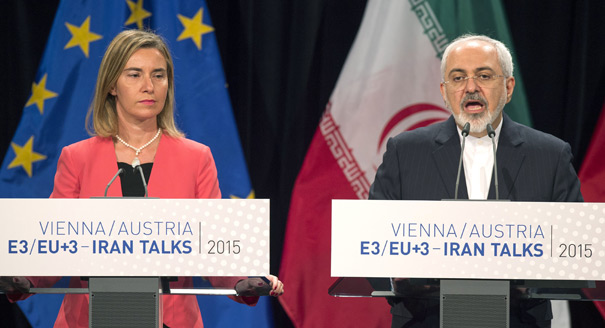Source: Metro
After a decade of negotiations, world powers have reached a deal that will limit Iran’s nuclear activity in exchange for lifting the country’s economic sanctions. Sinan Ulgen, a visiting scholar at the Carnegie Europe think-tank, explains to Metro the implications of the historic agreement.
Q: What’s the deal with the Iranian deal?
The deal is about Iran accepting measures of transparency regarding its nuclear program but also limitations on its nuclear infrastucture including uranium enrichment, procurement of nuclear technologies and nuclear research. In return, the international community will lift sanctions that has affected the Iranian economy. But sanctions will be lifted once Iran has fully implemented its commitments under the deal within a year approximately.Q: Iranian Foreign Minister Mohammad Javad Zarif said the agreement "is not perfect for anybody". How so?
There are a number of areas where the two sides had to concede compared to their initial negotiating positions. For instance, Iran wanted sanctions to be lifted with the signature of the agreement. The international community had initially wanted Iran to stop all enrichment activity. In the end, Iran obtained the right to keep some enrichment capacity but certainly much less than what it had set up until now.
Q: In what regard is this deal a historic one?
It is the first time that the Iranian regime commits itself to such intrusive international inspections regarding its nuclear program. Following the ill-fated U.S. intervention in Iraq in 2003, Iran has ascertained itself as a regional power on the basis of a growing sectarian polarisation. Tehran has used this influence to unsettle regional balances. Now with the deal, there is hope that a new climate of cooperation can be created in order to raise the prospect of peace and stability in the Middle East, at a time when the rise of the Islamic State has the potential to upend the regional order.
Q: The deal has been years in the making. Why so long?
It is a vastly complicated and technical deal. The P5+1 Group [China, France, Russia, UK, U.S., plus Germany] had not only to negotiate with Iran but they also had to maintain unity with their group. So the dynamics of the negotiations were very difficult. More generally, however, incentives were lacking on the Iranian side. The regime feared a backlash domestically if it was seen to be capitulating to the demands of the West on program that nourishes popular pride. But the severe economic impact of the sanctions changed this calculus and compelled the Iranian leadership to seek and acceptable settlement.
Q: Federica Mogherini, the EU's high representative for foreign affairs and security policy, said the deal was “a sign of hope for the entire world”. In what way is this true?
Failure to reach an agreement would have heralded an environment of confrontation and possibly military strikes against Iran to curtail its nuclear program. The threat of military confrontation has thus been averted. The deal opens a new window of opportunity for dialogue between Iran and the West.
Q: What’s next?
The deal has to be implemented. Iran has to start fulfilling its commitments; the International Atomic Energy Agency will monitor the pace and scope of this implementation. It will eventually report back to the United Nations Security Council that Iran is in full compliance with its commitments. In the meantime, the U.S. administration will also need to move ahead with the lifting of its sanctions. That will necessitate Obama to convince a lukewarm Congress.







